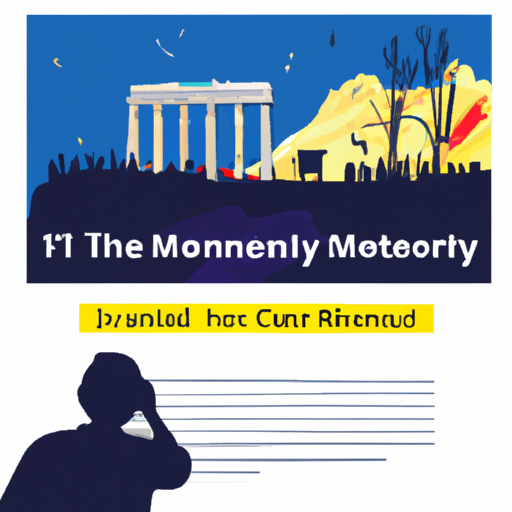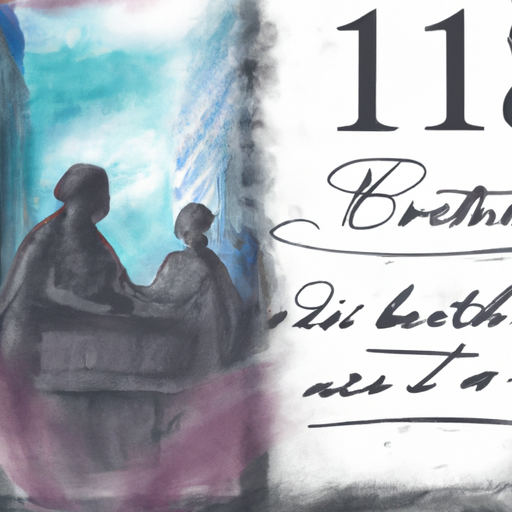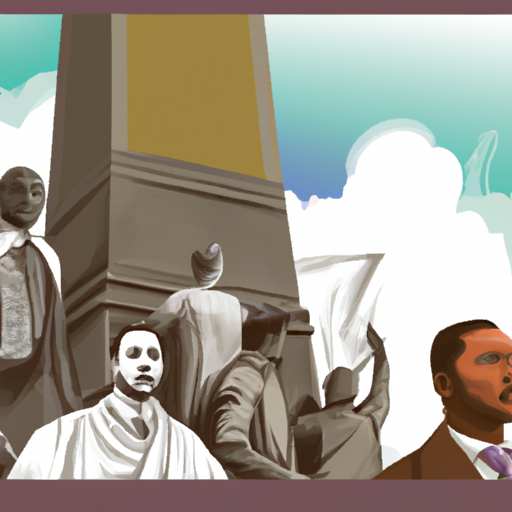A Look at the History of the Victorian Age
Unearth the past of the Victorian era and find out what makes it so unique! Delve into the depths of this period and explore the mysteries that lie within. Unravel the secrets of this time, and uncover why it is so remarkable! Uncover the hidden gems of this age and discover why it is so treasured.

A time of remarkable transformation, the Victorian era is remembered for its distinct culture and customs. From 1837 to 1901, it was a period of industrialization, global trade networks, and a growing middle class. Art and architecture flourished during this period with iconic structures such as Big Ben, St Pancras Station, and Buckingham Palace taking shape. Gothic Revival and Neo-Gothic styles were also popularised in Britain during this time.
The Victorians were renowned for their literary works too; Charles Dickens and Charlotte Bronte wrote some of the most beloved novels of all time. Fashion also played an important role in the Victorian era with extravagant clothing such as crinolines and bustles becoming increasingly popular amongst the wealthy classes.
Britain’s position as one of the world’s leading powers was solidified during this period too; its vast empire covering five continents enabled rapid economic growth which allowed it to become a major player on the international stage.
The legacy of the Victorian era lives on today; its art, architecture, literature and fashion continue to be celebrated around the world. It remains one of the most remarkable eras in British history!
.
Introduction

A period of intense transformation and progression, the Victorian Age in British history stretched from 1837 to 1901 during the rule of Queen Victoria. It was a time of immense progress and expansion, with remarkable cultural accomplishments. This era is remembered for its literature, with renowned authors such as Charles Dickens, George Eliot and Thomas Hardy now being regarded as some of the greatest English writers ever. In addition, technology saw great advances with inventions such as the telephone and lightbulb being introduced. The industrial revolution had a major influence on this period too, leading to improved production and transportation capabilities. Queen Victoria herself was known for her sense of propriety and respectability, which added to the moral values that were so prominent during this age. All these aspects make the Victorian Age one of the most significant periods in British history.
– History of the Industrial Revolution in the Victorian Age
A period of immense transformation and progression, the Industrial Revolution of the Victorian Age was a crucial milestone in history. The British economy shifted from an agrarian state to a powerful industrial nation, with tremendous repercussions felt throughout the world. This period saw a plethora of inventions, machines and processes that allowed for mass production of goods, as well as steam power providing an inexpensive yet dependable energy source. These advancements enabled factories to be established at a larger scale than ever before, leading to people migrating from rural areas to cities in pursuit of work opportunities. Consequently, these factory owners experienced great wealth while their employees were faced with long hours, meager wages and hazardous conditions in their places of employment.
The Victorian Age also brought forth many other technological innovations that have since shaped our current reality. Railroads were created for quick transportation over long distances; telegraphs and telephones enabled instantaneous communication across vast expanses; medical advancements improved public health; and new inventions made everyday life easier for countless individuals. As such, social reformers took action by introducing legislation like Factory Acts and Trade Union Acts in order to better working conditions and grant workers more rights.
All in all, the Industrial Revolution had an extraordinary effect on British society during this period – one that continues to reverberate today – ultimately propelling economic growth and initiating social change on a global scale.
– Historical Impact of Queen Victoria’s Reign
The reign of Queen Victoria, spanning from 1837 to 1901, left an everlasting imprint on the annals of Britain and beyond. The Industrial Revolution began in her time, revolutionizing the production of goods with new technology that enabled them to be produced at lower costs. This had a profound impact on people’s lives, as well as increased trade between countries. Moreover, under her rule Britain established a sprawling empire across much of the globe. In addition, Queen Victoria was a staunch advocate for social reform which brought about major changes in education and healthcare.
The expansion of the British Empire had a momentous effect on world history; it brought stability to many regions that were previously chaotic or turbulent and introduced new technologies and ideas to areas where they were not accessible before. This included advances in medicine, education, and government administration which shaped these regions for centuries to come.
Moreover, Queen Victoria was an important figure in reforming society during her reign; she supported educational reforms such as making school attendance compulsory for children aged five to thirteen years old; furthermore she advocated for better healthcare access for all citizens regardless of their class or income level. These reforms greatly improved living conditions within Britain and paved the way for further developments later in the 19th century and beyond.
All in all, Queen Victoria’s reign had a monumental effect on British history with far-reaching repercussions around the world. Her commitment to social reform bettered living standards within Britain while her support for global expansion made Britain one of the most powerful empires ever known with an enduring influence on international relations today.
– Historical Significance of Social Reforms during the Victorian Era
A period of tremendous transformation in British culture, the Victorian Era was marked by a flurry of social reform movements. These undertakings sought to ameliorate the lives of those living in destitution and bring about greater impartiality for all classes. From industrialization to educational reforms, these changes left a lasting impression on Britain’s social infrastructure.
One noteworthy example of this was the Chartist Movement, which attempted to better the conditions of working-class individuals by demanding universal suffrage, higher wages, and shorter work hours. Though their efforts were unsuccessful, they laid the groundwork for later initiatives such as the 1867 Reform Act which granted voting rights to more people.
The Forster Education Act of 1870 was also paramount during this time period, mandating compulsory elementary education for all children in England and Wales and thereby increasing literacy rates across all classes. It also set the stage for progressive educational opportunities such as secondary schools and universities that enabled more people to pursue higher learning.
The Factory Acts were another crucial piece of legislation passed during this era that worked towards protecting workers from mistreatment by limiting working hours and improving safety standards in factories. This had a great impact on reducing child labor, increasing wages, and providing better work conditions for factory employees throughout Britain.
Altogether, it can be said that the Victorian Age was an epoch when numerous momentous social reforms took place that shaped British society into what it is today. Through increased access to education and improved workplace safety regulations, these changes left an indelible mark on British history while creating a fairer environment where everyone had equal rights regardless of their class or background.
– Historical Legacy of Art and Literature from the Victorian Age
A period of immense cultural and artistic production, the Victorian Age has left behind a legacy that continues to shape our understanding of history. Literary works from this era, such as Charles Dickens’ A Tale of Two Cities, Emily Bronte’s Wuthering Heights, and Jane Austen’s Pride and Prejudice are renowned for their vivid characters and plots, as well as their examination of social issues. Art from this time is equally impressive, with paintings by John Everett Millais and William Morris among the most famous. Other notable artists include Dante Gabriel Rossetti, Edward Burne-Jones, and Ford Madox Brown. Their influence can be seen in many modern works.
The historical significance of art and literature from Victorian times has had an enduring impact on our culture today. Through these pieces we gain insight into the lives of people during this period while simultaneously being inspired by their creativity and ingenuity. Centuries later these works still captivate us with their remarkable beauty and complexity.
– Historical Overview of Technological Advances during the Victorian Era
The Victorian Era (1837-1901) was a time of remarkable progress and novelty. From the telegraph to the telephone, this period bore witness to a series of pioneering inventions that have had an enduring impact on how we communicate. In this article, we’ll explore some of the most consequential technological breakthroughs from this era.
Samuel Morse’s 1844 invention of the telegraph allowed for instantaneous transmission of electrical signals along wires between two distant locations, forever altering communication by enabling people to rapidly share news and information over long distances.
Alexander Graham Bell’s 1876 invention of the telephone allowed for communication through voice instead of just text messages, making it much simpler to stay in contact with loved ones who were far away.
Thomas Edison’s 1879 invention of the light bulb replaced oil lamps and candles as a source of illumination, allowing people to work and socialize into late hours without being constrained by darkness.
Transportation also saw advances during this period; while the steam locomotive had been invented earlier, its use became more widespread during this time, providing faster travel than ever before and creating new possibilities for trade and exploration.
These are but a few examples of the many technological advances made during the Victorian Era that continue to shape our lives today.
conclusion

A period of immense significance in the annals of history, the Victorian Age saw remarkable leaps forward in technology, industry and politics. This era was one of colossal development for the British Empire, leading to broadened commerce and worldwide clout. Social developments were also afoot during this time, with the emergence of a burgeoning middle class and an upsurge in feminism. The literary works produced during this time are still highly esteemed and widely read today.
.
Some questions with answers
Q1: What was the Victorian age?
A1: The Victorian age was a period of time in British history from 1837 to 1901, during the reign of Queen Victoria.
Q2: What are some unique aspects of the Victorian era?
A2: Some unique aspects of the Victorian era include an emphasis on morality, religion, and social reform; advances in technology; and a flourishing of literature and the arts.
Q3: How did the industrial revolution affect the Victorian era?
A3: The industrial revolution had a huge impact on the Victorian era. It led to increased production and efficiency, as well as improved transportation networks. It also created new jobs and wealth for many people.
Q4: What were some common values during this period?
A4: Common values during this period included hard work, respectability, self-improvement, and patriotism. Respectability was especially important for those who wanted to be seen as members of polite society.
Q5: What is one lasting legacy of the Victorian age?
A5: One lasting legacy of the Victorian age is its influence on architecture. Many iconic buildings from this period still stand today, such as Big Ben in London and Parliament Hill in Ottawa.




